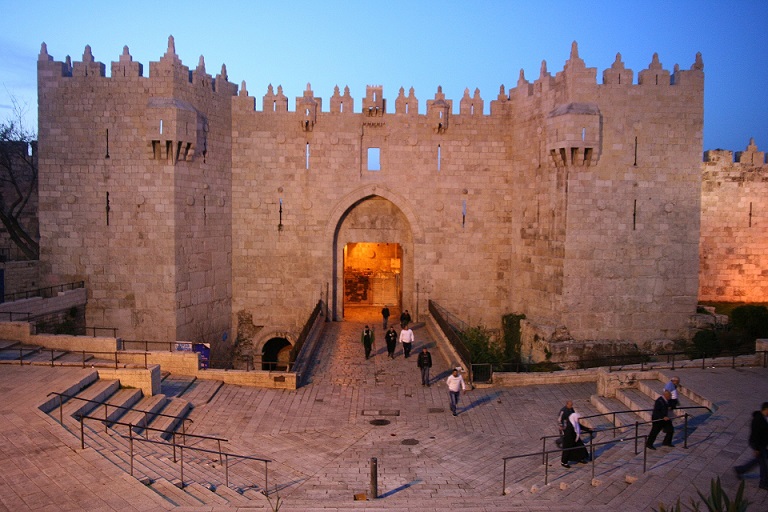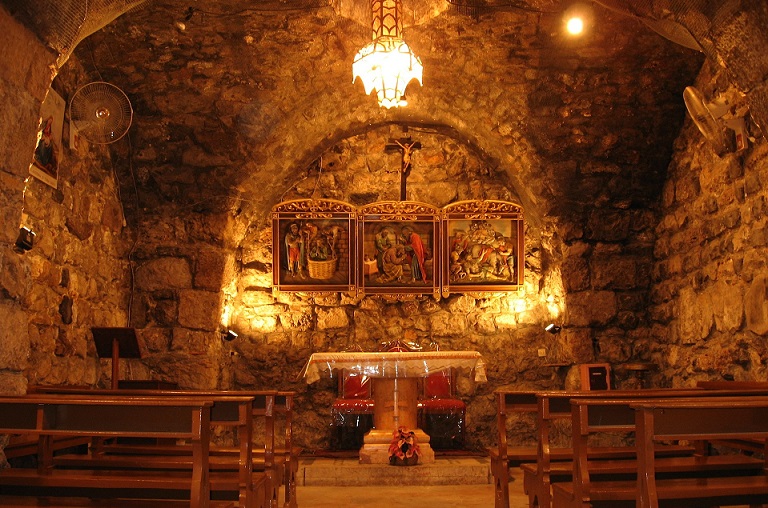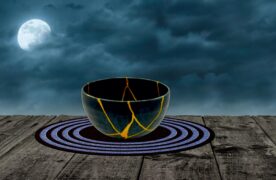Come in, come in, says a man at the entrance to his handicrafts shop, while all around him there is the hustle and bustle of prospective customers shuffling from one side of the street to the other in front of hundreds of shops and stalls.
 Roberto Castellanos
Roberto Castellanos
To one side of the imposing Umayyad Mosque, women wearing the niqab (the black dress which covers the whole body and the face), buy homeware while close by, a young woman dressed in jeans and a blouse looks at some posters displayed in the shop windows.
As in any Arab city, the souqs or traditional markets abound in Damascus, both indoor and outdoor, and are divided into specialities: food, handicrafts, metalware, clothing and footwear, amongst many others.
Packed well into the night, the Al-Hamidiyah Souq is a shining example of life in the old City of Damascus, where exquisite Damascus daggers to sweets, spices and foods are for sale.
For a foreigner, it is difficult to understand the pleasure which sellers feel when haggling over the price of any product, but always with respect and consideration. As in the rest of the metropolis, it is normal in this area to see groups of men talking while smoking the hookah, the famous pipes of water which mix tobacco with other plants and flavours.
In this part of the city, so full of jasmine, old and new traditions go hand in hand.
To visit this place is to submerge yourself in the tales of Arabian Nights: chaotic and labyrinth-like bazaars amongst buildings dating back thousands of years. In its narrow and winding alleyways where it is very easy to get lost, the Hamam or Turkish bathsare teeming.
Nearly 900 years old, the most famous is the Nuredin which takes its name from the uncle of Saladin, victor of the crusades and conqueror of Jerusalem.
Ancient but dazzling, this part of the city treasures the history of the Middle East like no other with its civilisations, traditions, cultures and religions. During its long history, Amorites, Hyksos, Arameans, Hittites, Egyptians, Assyrians, Persians, Greeks, Romans, Byzantines, Umayyads, Ayyubids, Mamelukes, Mongols, Ottomans and French have passed through, a mix which has left its mark on its people, ethnically Arab.
Here, the visitor can find Roman or Byzantine ruins next to Christian churches hundreds of years old, mosques built by the Umayyad dynasty or buildings from the Ottoman period. Although the war which since 2011 has caused more than 200,000 deaths, has affected the lives of the Damascenes, they try to minimise its impact.
In this city, people live together without giving much importance to history. Stretches of the Roman wall or sides of houses centuries old are used for hanging posters or items for sale. The same occurs with the metal-studded doors through which they used to enter inside.
 Sometimes, the walls of old buildings are used to construct others more modern, whilst the ruins of a Roman temple dedicated to Jupiter are surrounded with scaffolding from which hang boiled corn-on-the-cob and even books for sale.
Sometimes, the walls of old buildings are used to construct others more modern, whilst the ruins of a Roman temple dedicated to Jupiter are surrounded with scaffolding from which hang boiled corn-on-the-cob and even books for sale.
Damascus is considered to be the most ancient capital of the world and has been continuously inhabited.
Surrounded by walls from the Roman era with improvements made during the Ayyubid dynasty, the 135-hectare historic centre has been declared a UNESCO World Heritage Site. Although these days large stretches are missing due to the stone being used for new constructions over the centuries, large parts are still conserved.
Eight of the historic entranceways are still standing: Bab al Faraj, Bab al Faradis, Bab al Salam, Bab Tuma, Bab Sharqi (the oldest, going back to Roman times), Bab Kisan, al Bab al Saghir and Bab al Jabiya. A sign of cultural diversity and the tolerant Islam religion which has been practised in the region for centuries, ancient Christian temples still resist the passing of time, including Syrian Orthodox, Greek Orthodox and Greek Catholic cathedrals.
Packed with traders especially those selling ceramics and metal handicrafts such as jugs, daggers or silverware, the Vía Recta, the main Roman street in the old town divides the Christian neighbourhood (Bab Tuma to the north) and the Jewish (Harat al Yahud to the south).
Today, the construction of the main road is much narrower than its predecessor and is by no means straight, but it continues to be a mandatory route in the area.
To the west, you will find the Arab quarter. There you can find the citadel with its 12 towers, a construction originally built in 1076 and which was redesigned various times during the following 400 years by different governments, although its main part dates back to the Ayyubid dynasty. Another highlight is the Umayyad Mosque, a symbol of old Islamic art which, together with its four minarets, looks out over the city.
With its beautiful jasmine-covered gardens, the Azm Palace is an example of Arab-Ottoman architecture and one of the most beautiful places in the city. Esablished in 1750 as the residence of the then-Ottoman Governor of Damascus, Asad Pasha al Azm, the site was converted into the Museum of the Arts and Popular Traditions, where you can observe life in 18th and 19th century Damascus by way of objects such as paintings and plaster figurines.
(Translated by Susan Seccombe – ess.translations [@] gmail . com) – Photos: Pixabay












.jpg)












